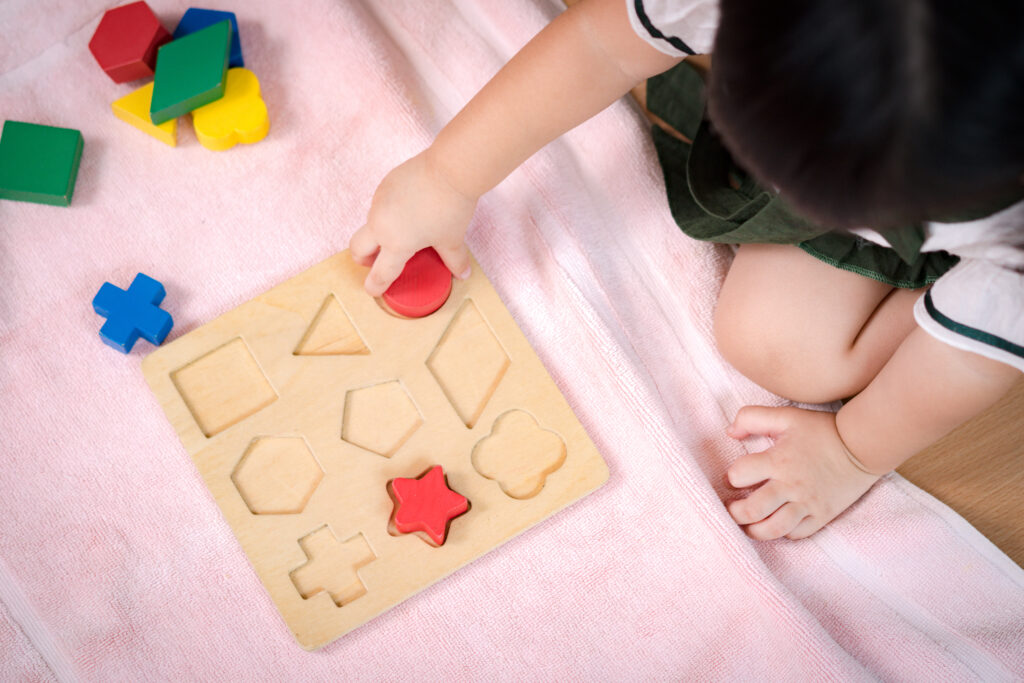Eye Hand Coordination Development in Kids

Have you ever wondered how children develop such impressive hand-eye coordination skills? From catching a ball to drawing intricate shapes, their ability to synchronize their hands with their visual perception is truly remarkable. In this blog article, we will delve into the fascinating process of how it develops in children, shedding light on the milestones and factors that contribute to this crucial skill.
Hand-eye coordination refers to the ability to use the eyes to guide the hands in performing specific tasks. It involves the seamless integration of visual information processing and motor skills. This vital skill allows children to perform activities like writing, playing sports, and even everyday tasks like tying shoelaces or using utensils.
The Developmental Stages of Hand Eye Coordination
1. Reflexive Stage (0-4 months):
During the first few months of life, infants begin to develop basic reflexes, such as grasping objects placed in their hands. While these actions are instinctual and not fully controlled, they lay the foundation for the future.
2. Intentional Stage (4-8 months):
Around four months, infants start to purposefully reach for objects. They develop the ability to visually track objects and use their hands to grasp them. This stage is crucial for development as babies begin to understand cause and effect.
3. Controlled Stage (8-12 months):
Between eight and twelve months, infants refine their skills further. They gain better control over their movements, allowing them to manipulate objects with more precision. This stage is marked by the ability to transfer objects from hand to hand and the development of a pincer grasp.
4. Refined Stage (1-2 years):
Toddlers in this stage exhibit improved hand-eye coordination. They can stack blocks, turn pages of a book, and scribble with crayons. Their visual tracking skills become more accurate, enabling them to follow moving objects more efficiently.
5. Advanced Stage (2-6 years):
As children grow older, their hand-eye coordination becomes more refined and complex. They can catch and throw a ball, draw basic shapes, and use scissors. This stage is characterized by improved hand dexterity and the ability to perform more intricate tasks requiring precise control.
Factors Influencing Development
1. Genetics:
These abilities can be influenced by genetic factors. Some children may naturally possess better coordination skills due to their genetic makeup.
2. Sensory Processing:
The processing of sensory information plays a crucial role in hand-eye coordination development. Children with well-developed sensory systems, including vision and proprioception (awareness of body position), tend to exhibit better coordination skills.
3. Environmental Factors:
A child’s environment plays a significant role in shaping their hand-eye coordination. Opportunities for play and exploration, exposure to a variety of activities, and access to toys and tools that promote this all contribute to skill development.
4. Practice and Motor Skills:
Like any other skill, hand-eye coordination improves with practice. Engaging in activities such as playing sports, building with blocks, or drawing, help children refine their motor skills over time.
Hand-eye coordination is a critical skill that develops gradually in children. From the reflexive stage to the advanced stage, children progress through various milestones, refining their abilities to synchronize their hands with their visual perception. Genetic factors, sensory integration, environment, and practice all play significant roles in its development. By understanding this process, parents and caregivers can provide the necessary support and opportunities for children to enhance their coordination skills, empowering them to navigate the world with confidence and precision.
